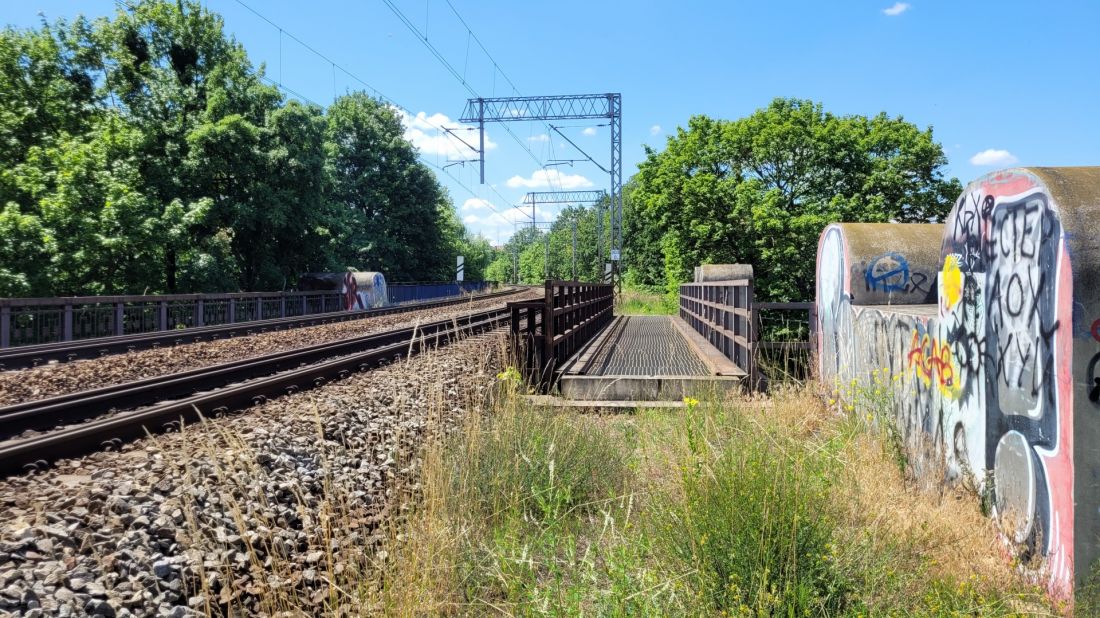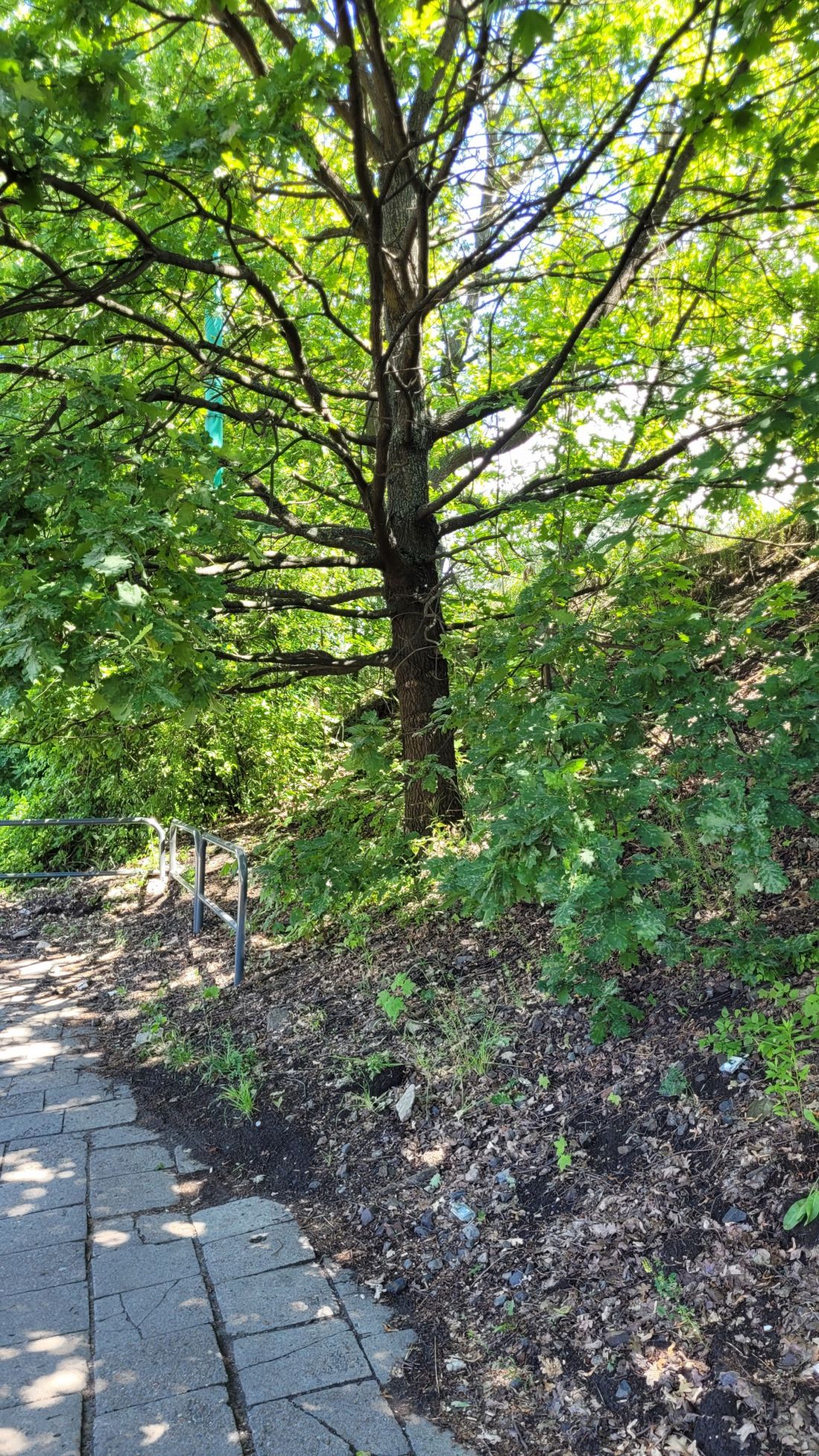The railroaders intend to cut down more than six hundred trees in downtown Poznań. So socialists and environmentalists have begun an active protest. The cutting plans are a continuation of earlier actions. As a result, some railroad embankments have already been stripped. PKP hides behind regulations and safety reasons.
The logging alert was announced Monday on Facebook by the ZaZieleń Poznań Coalition, which has been working on behalf of urban nature for years:
PKP Polskie Linie Kolejowe S.A. wants to cut several hundred trees from the railroad embankment at Pułaskiego Street and further along the embankment, up to Garbary Street in Poznań. The trees planned to be cut down are mainly oaks, maples and elm trees, some of them with girths of up to approx. 2 m. The trees are threatened by an extremely harmful law, by which thousands of beautiful trees have already disappeared in Poland, at railroad stations and on other sections of railroad lines.
Tall greenery (to be removed) along the PKP tracks in the center of Poznań—trees along the railroad route in the direction of Warszawa and Gdańsk, next to Pulaski Street
photo: Jakub Głaz
As if the whole park disappeared
The matter is very serious, because the aforementioned embankment, which carries the busy route to Warszawa and Gdańsk, is a kind of green corridor in downtown Poznań. The trees on its slopes grow densely and are of great beauty. They have aesthetic, natural and functional qualities—they partially insulate the city from noise generated by trains. The green „walls” of the embankment have formed a kind of linear greenery for decades, and are so firmly embedded in the city's landscape that their removal can be compared to cutting down a mature urban park.
The law the naturalists are referring to is the Ministry of Infrastructure's regulation to the Railway Transport Law, according to which no tree can grow within 6 meters of the extreme rail. However, the regulation does not distinguish between the height at which the trees grow, and this is of great importance in the case of embankments. Naturalists point out that, logically, trees growing on slopes below the tracks pose little danger to train traffic. They also point out that on the Poznań embankment to be plowed, trains approaching the Central Station travel much slower, further minimizing the risk of significant consequences of a collision with a branch or the upper, less massive branch of a tree snapped off in a windstorm.
High greenery along the PKP tracks in the center of Poznań—a view of the overgrown railroad embankment from Pulaski Street; railroaders plan to shave it off
photo: Jakub Głaz
the losses are already there
The ordinance and its thoughtless implementation have already brought damage to Poznań. In recent years, the railroaders have cut down all the trees of the embankments with the tracks leading to Piła and Szczecin (along St. Lawrence Street and further—in Poznań's western green wedge). They also removed the remnants of a stand of trees that until more than a decade ago filled the railroad track trench between the Teatralny and Dworcowy bridges (viaducts). The losses to the landscape and microclimate seem enormous. For many decades, dense greenery neutralized the presence of the railroad „cleft” dividing the city. Today, it is an unpleasant-looking desert.
Railroad area between Theater Bridge and Kaponiera stripped of trees by PKP; Baltic office building in the background
photo: Jakub Głaz
The Zazieleń Poznań Coalition therefore wants to firmly prevent further devastation of the urban landscape. In addition to the arguments indicated above, it argues that trees
are also of great value, being a showcase of Poznań as a green city, which rail passengers experience when riding along this section of the railroad line.
Tall greenery that railroaders want to remove along the PKP tracks in the center of Poznań—strips of tall trees on the embankment on both sides, view from the overpass over Nowowiejskiego Street towards Poznań Główny station
Photo: Jakub Głaz
fight for nature monument
The coalition also announces that together with the Right to Nature association, it is applying to join the cutting proceedings and make its documentation available. It also wants the group of trees on the railroad embankment to be recognized in its entirety as a natural monument (special natural, landscape and social value).
The topic was taken up by the local editorial board of Gazeta Wyborcza on Wednesday. It confirmed to the City Hall's Climate and Environment Department that PKP PLK is applying to cut down as many as 658 trees. It also posted a statement by Radoslaw Sledzinski of the company's Poznań press office, who said that the
strong windstorms and weather anomalies can lead to dangerous situations where fallen trees or broken branches and boughs fall onto the tracks. This is a huge threat to the life and health of passengers, also leading to the suspension of rail traffic.
High greenery along the railroad tracks in the center of Poznań—one of the mature trees on the embankment growing well below the railroad tracks (right); Pulaski Street (left)
Photo: Jakub Głaz
However, Sledziński did not refer to those cases where trees grow well below the tracks, nor did he provide statistics on accidents or delays caused by fallen trees. Instead, he informed that the railroaders have been waiting for permission to cut down trees from the city government since submitting their application in 2021.
The threat to Poznań's 658 trees is therefore very real, as it is in other cities and neighborhoods where railroaders have complied or will comply with the ministerial decree. It is therefore time to quickly change the wording of the law at the national level, so that trees disappear only where they can really threaten safety.










































